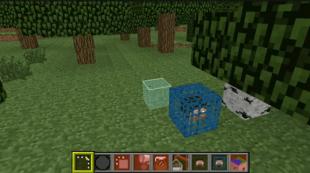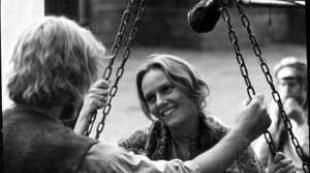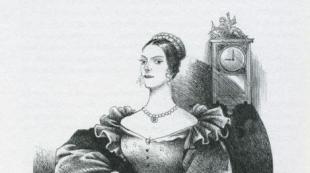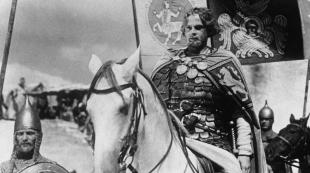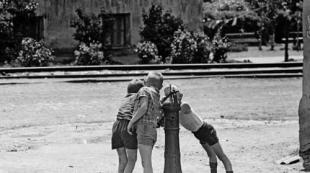The last secret of Anna Karenina. Why did Anna Karenina throw herself under the train? Brief analysis Anna Karenina threw herself under the train at the station
An interesting railway-philological analysis of "Anna Karenina".
Usually literary critics and philologists analyze the text and content of the novel, but do not go into the technical side: what did the steam locomotive and train look like, under which the unlucky heroine threw herself?
I decided to find out mopsia
... Its text, and I only consulted and supplemented it on the railway part.
[...] Unfortunately, Lev Nikolaevich, generally very attentive to all the details of the text being created, did not bother to indicate the type, serial number and year of production of the locomotive, under which Anna Karenina threw herself. There are no clarifications, except that the train was a freight train.
- What do you think, under which steam locomotive Anna Karenina threw herself? - I once asked the great ferroequinologist of all LJ.
- Most likely, under the "Sheep", - after thinking, answered S. - But, it is possible that under the "Solid Sign".
"Lamb": 
"Solid mark" 
I decided that, most likely, Tolstoy described "a train in general," and the species of the locomotive did not interest him. But if contemporaries could easily imagine this very "steam locomotive in general", then for posterity it is already much more difficult. We assumed that for the readers of that time, the "steam locomotive in general" was precisely the popular "Sheep", known to everyone from small to large.
However, during the check of the already posted post, it turned out that we both hurried to conclusions. S. did not remember the exact date of publication of the novel and attributed it to the end of the 1890s, when both "Ov" and "Kommersant" were already widely used on the railways of the Russian Empire, and when I checked, I got confused in the series and letters, and due to inexperience I simply "adjusted" the release date to the release date. Alas, it turned out to be not so simple at all.
The novel was conceived in 1870, was published in parts in the journal "Russian Bulletin" in 1875-1877, published as a separate book in 1878. The beginning of production of steam locomotives of the O series dates back to 1890, and the Kommersant series - even at the end of 1890. NS. Consequently, the heroine threw herself under some much more archaic steam locomotive, which is difficult for us to imagine now. I had to turn to the encyclopedia "Locomotives of domestic railways 1845-1955".
Since we knew that Karenina threw herself under a freight train, and we also knew the name of the road on which the tragedy occurred (Moskovsko-Nizhegorodskaya, opened for train traffic on August 2, 1862), the most likely contender is a freight locomotive of the G 1860 series -x years release. For the Moscow-Nizhny Novgorod railway, such locomotives were built by French and German factories. It features a very large, upwardly widening pipe and a half-open driver's booth. In general, in our modern opinion, this miracle of technology looks more like a child's toy :) 
Station
Just in case, let me remind you that Anna Karenina threw herself under the train at the Obiralovka station, located 23 kilometers from Moscow (and not in Moscow or St. Petersburg). In 1939, at the request of local residents, the station was renamed into Railway. The fact that Tolstoy chose Obiralovka once again confirms how attentive he was to all the details of the plot. At that time, the Nizhny Novgorod road was one of the main industrial highways: heavily loaded freight trains often ran here, under one of which the unfortunate heroine of the novel found her death.
The railway line in Obiralovka was laid in 1862, and after a while the station became one of the largest. The length of siding and siding was 584.5 fathoms, there were 4 arrows, a passenger and a residential building. The station was used by 9 thousand people annually, or an average of 25 people a day. The station settlement appeared in 1877, when the novel "Anna Karenina" was published (in 1939 the settlement was also renamed the city of Zheleznodorozhny). After the release of the novel, the station became a place of pilgrimage for Tolstoy's admirers and acquired great importance in the life of the surrounding villages.
When the Obiralovka station was at the end, there was a turntable here - a device for turning 180 degrees for locomotives, and there was a pump station mentioned in the novel "Anna Karenina". Inside the wooden station building there were office premises, a telegraph office, a commodity and passenger cash desks, a small hall of the 1st and 2nd class and a common waiting room with two exits to the platform and the station square, on both sides of which the passengers were "guarded" by cabbies. Unfortunately, now nothing remains of the former buildings at the station.
Here is a photo of Obiralovka station (late 19th - early 20th centuries): 
Now let's look at the text of the novel:
When the train approached the station, Anna walked out in the crowd of other passengers and, like lepers, avoiding them, stopped on the platform, trying to remember why she had come here and what she intended to do. Everything that had seemed possible to her before was now so difficult to comprehend, especially in the noisy crowd of all these ugly people who did not leave her alone. Now the artel men ran up to her, offering her their services; then the young people, knocking their heels on the boards of the platform and talking loudly, looked around her, then the oncoming ones avoided in the wrong direction.
Here it is, the boardwalk - on the left side of the photo! We read further:
"My God, where should I go?" - further and further leaving on the platform, she thought. At the end she stopped. The ladies and children, who met the gentleman with glasses and laughed and talked loudly, fell silent, looking at her when she drew level with them. She quickened her pace and walked away from them to the edge of the platform. A freight train was approaching. The platform shook, and it seemed to her that she was going again.
And suddenly, remembering the crushed man on the day of her first meeting with Vronsky, she realized what she had to do. With a quick, light step down the steps that went from the pump station to the rails, she stopped beside her right past her passing train.
The water tower means a water tower that is clearly visible in the photograph. That is, Anna walked along the plank platform and went downstairs, where she threw herself under a freight train passing at a low speed. But let's not get ahead of ourselves - the next post will be devoted to the railway-philological analysis of suicide. At the moment, one thing is clear - Tolstoy visited Obiralovka station and had a good idea of the place where the tragedy occurred - so well that the entire sequence of Anna's actions in the last minutes of her life can be reproduced based on a single photograph.
The second part of the investigation
While selecting materials for the post, I came across the opinion that Anna Karenina's suicide is convincing from an artistic point of view, but doubtful from a, so to speak, “technical” point of view. However, there were no details - and I wanted to figure it out myself.
As you know, the prototype of Anna Karenina is a combination of the appearance of Maria Gartung, Pushkin's daughter, the fate and character of Maria Alekseevna Dyakova-Sukhotina, and the tragic death of Anna Stepanovna Pirogova. We will talk about the latter.
In the initial plan, Karenina was called Tatyana, and she parted with her life in the Neva. But a year before the start of work on the novel, in 1872, a tragedy occurred in the family of Tolstoy's neighbor, Alexander Nikolaevich Bibikov, with whom they maintained good-neighborly relations and even started the construction of a distillery together. Anna Stepanovna Pirogova lived with Bibikov as a housekeeper and common-law wife. According to the memoirs, she was ugly, but friendly, kind, with a soulful face and easy character.
Recently, however, Bibikov began to give preference to the German governess of his children and even decided to marry her. When Anna Stepanovna found out about his betrayal, her jealousy crossed all boundaries. She ran away from home with a bundle of clothes and for three days wandered around the area, beside herself with grief. Before her death, she sent a letter to Bibikov: “You are my killer. Be happy if the killer can be happy at all. If you wish, you can see my corpse on the rails in Yasenki ”(station not far from Yasnaya Polyana). However, Bibikov did not read the letter, and the messenger returned it. Desperate Anna Stepanovna threw herself under a passing freight train.
The next day, Tolstoy went to the station when an autopsy was performed in the presence of a police inspector. He stood in the corner of the room and saw in every detail a woman's body lying on a marble table, bloodied and mutilated, with a smashed skull. And Bibikov, recovering from the shock, soon married his governess.
This is, so to speak, prehistory. Now let's re-read once again the description of the unfortunate heroine's suicide.
*****
With a quick, light step, going down the steps that went from the pump station to the rails, she stopped beside her right past her passing train. She looked at the bottom of the carriages, at the screws and chains and at the high cast-iron wheels of the slowly rolling first car, and with her eye tried to determine the middle between the front and rear wheels and the minute when the middle would be opposite her.
"There! - she said to herself, looking into the shadow of the carriage, at the sand mixed with coal, with which the sleepers were filled, - there, in the very middle, and I will punish him and get rid of everyone and myself. "
She wanted to fall under the middle of the first car. But the red bag, which she began to remove from her hand, held her back, and it was already too late: the middle had passed her. We had to wait for the next car. A feeling similar to that which she experienced when, while swimming, she was preparing to enter the water, seized her, and she crossed herself. The habitual gesture of the sign of the cross evoked in her soul a whole series of girlish and childhood memories, and suddenly the darkness that covered everything for her burst, and life appeared to her for a moment with all its bright past joys. But she did not take her eyes off the wheels of the approaching second carriage. And exactly at that moment, as the middle between the wheels caught up with her, she threw back the red bag and, pressing her head into her shoulders, fell under the carriage on her hands and with a light movement, as if preparing to get up immediately, knelt down. And at the same moment she was horrified at what she was doing. "Where I am? What am I doing? Why?" She wanted to get up, to lie back; but something huge, inexorable pushed her in the head and dragged her behind her back. "Lord, forgive me everything!" She said, feeling the impossibility of a fight. The peasant, while saying something, was working on the iron. And the candle, at which she read a book full of anxiety, deception, grief and evil, flashed with a brighter light than ever, illuminated for her everything that had previously been in the darkness, crackled, began to fade and went out forever.
*****
The fact that Anna Karenina threw herself under a freight train, and not under a passenger train, is absolutely correct from a technical point of view. Whether Tolstoy's observation played a role here or whether he specifically drew attention to the arrangement of the cars is unknown, but the fact remains: it was extremely difficult to rush under the pre-revolutionary passenger carriage. Note the undercarriages and iron struts for strength. The unlucky suicide would rather be crippled and thrown onto the platform. 
And here is the boxcar. Approximately under this, if you believe the description, the unfortunate heroine rushed. There are no undercar boxes, there is a lot of free space and you can easily “count” the middle. Considering that Anna managed to "dive" under the carriage, fall on her hands, kneel down, be horrified at what she was doing, and try to get up, it becomes clear that the train was traveling very slowly. 
... fell under the carriage on her hands and with a light movement, as if preparing to get up immediately, knelt down.
But here I disagree with the classic: you can fall between wagons, and under the carriage still has to "dive", that is, bend over, move forward and only then fall onto the rails. For a lady in a long dress with a bustle (in the fashion of that time), in lace and in a hat with a veil (ladies with bare heads did not go out into the street, and even above in the text it is mentioned that “horror was reflected on her face under the veil”) the case difficult to do, but in principle possible. By the way, pay attention - she took off the "bag" and threw it away, but no hat.
« Something huge, inexorable pushed her in the head and dragged her behind"- here Tolstoy took pity on the readers and tried to avoid excessive realism. The unnamed "something" is a heavy cast-iron wheel (or rather, a wheelset). But I will not go deeper either, because it is actually scary to imagine.
- But why didn't she just throw herself under the locomotive? - I asked S. - Why dive under the carriage?
- But what about the front bumper? That is why it was installed - in order to push cows, goats and other Karenins off the path if necessary ... She would simply be thrown aside, and instead of a romantic death, there would be deep disability. So the method is technically correct, although not very convenient for a lady dressed in the fashion of that time.
In a word, we did not find any "technical" blunders in the description of Anna Karenina's death. Apparently, Tolstoy not only watched the autopsy of the deceased Anna Pirogova, but also talked with the investigator, collecting creepy, but necessary material to describe the suicide.
This question, based on the novel by Leo Tolstoy, can be considered not even a subject matter, but a philosophical one. Many critics and fans of this novel have given their own interpretations of the answer, ranging from overtly humorous to deeply moral. If you closely follow the plot, you can reveal the true reason why the main character of the novel of the same name fell on the rails.
Let's start with a brief retelling. Anna lived with her unloved husband in prosperity and luxury, she had a son, Serezhenka. Everything, it would seem, was good, but only Anechka wanted “the wind of new love,” passion, fire. And suddenly a "prince" appeared - Vronsky, the embodiment of all the dreams and fantasies of a woman. And she ran away with her sweetheart, and they began to live, but not happily ever after, as it should be in fairy tales. After all, life itself is not very magical and fabulous. Karenina's idyllic notion of life was destroyed, and even she could not fall in love with her newborn daughter, apparently regretted her abandoned son Seryozha. And this is where the main subtle moment begins - the struggle within the main character.
Karenina had a heightened sense of justice, and therefore she could not just, as they say now, “score” on the opinion of others and her past life. Anna begins to torment herself, to tune in to the worst, afraid of condemnation from society - they say, what kind of wife and mother she is that she abandoned her husband and child. And Karenina's delicate spiritual organization could not be in harmony - her darling rushed to the railroad rails in her torment. And then, as luck would have it, the train was going, and it seemed to Anna the best salvation from all troubles. She decided to generously rid the world of herself - so bad and uncomplicated. Well, the moving train seemed to her the solution to all problems and troubles. Already rushing onto the rails, Anna seems to change her mind, but the jump has already been made and nothing can be changed. It turns out that the woman still died unsettled.
There is one more small detail described in the novel - Karenina used opium as a sedative and sleeping pill. Many did this at that time, not knowing or not wanting to know that it was a potent psychotropic drug, a drug. Her mood changed regularly, and suicidal thoughts appeared. You can even say that Karenina was depressed (however, then there was no such thing yet). She believed that Vronsky's only interest should be the family, and any of his departure, even on business, was considered by Karenina an excuse for a break on the part of her husband. An attentive reader may find several paragraphs in Tolstoy's novel, which say that in the last days before her suicide, Karenina wanted to take revenge on her husband for his inattention, to attract his interest to herself. So one of the reasons for "jumping under the train" can be considered personal prejudices and far-fetched reasons for Karenina herself. Women do not live in peace, they are used to looking for flaws in everything, and that is why such cases happen as with Anna Karenina and Katerina from Ostrovsky's novel "The Thunderstorm". These two heroines are constantly compared with each other, and indeed, there is something similar between them - the desire for a better life, but in the end everything ends very tragically.
To understand why Anna Karenina threw herself under the train, what was the reason for this act, one should analyze the society of that time. Leo Tolstoy's novel describes the mores and customs of the high society at the end of the XIX, and the power of its influence on a person. Society imposes its own rules and demands their strict observance.
Adultery is not condemned, and rather is the norm of that time, but it had to be hidden, and not exposed. Anna challenged the hypocritical rules of society, for which she paid.
Why did Anna Karenina rush under the train
Anna's prosperous life in the novel is described quite vividly. The husband is a wealthy tsarist official, strong, solid, but not loved. Anna did not oppose marriage, however, she felt only respect for her husband, but not love. She gave all her tenderness to her little son, and it was he who became the center of the universe for her. In society, Anna was respected, appreciated, they listened to her advice. Her intelligence and charm made her a welcome guest in any home.
The young woman created the illusion of a happy family, but everything shattered in an instant when a chance meeting turned her world upside down. The brilliant officer Alexei Vronsky awakened in her heart those feelings that Anna had not previously suspected. The struggle with herself, with the imposed rules and the inability to live a lie leads to the fact that Anna demands a divorce from her husband.
However, rules, laws and etiquette are more important to the husband. He is ready to forgive Anna, closing his eyes to her betrayal. After all, a divorce could affect his career, and Anna's feelings were not taken into account. The main thing is the rules. According to the concepts of that time, the spouse showed nobility, however, is this act really noble? He was not jealous of Anna, but only demanded that she "keep up appearances."
Why did Karenina throw herself under the train? After all, Anna still went to her beloved person, and even gave birth to his daughter?
In the new relationship, Anna did not find peace and harmony. Her husband separated her from her beloved son, the sanctimonious society condemned and rejected her. Vronsky was forced to resign and the young lovers left the city, where they were condemned.
Deprived of her son and friends, Anna could not find a place for herself. Her whole world narrowed only to Vronsky, and she strove to become a whole world for him. She understood that Vronsky sacrificed much for her sake, but it seemed to her insufficient. Anna saw no way out of this situation, and any of her steps will bring pain to someone close.
The feeling of guilt exhausted the young woman, made her insecure and jealous. The sudden realization of what she had become even more shocked the unfortunate woman. She just wanted happiness, wanted to live honestly, not hiding her love, but this was unacceptable for the high society.
Morphine, which she began to drink to calm her, only exacerbated her feelings. Under the influence of intoxication, Anna was jealous of Vronsky for fictitious women, which caused quarrels between lovers. Anna's love began to weigh on Vronsky, and he tried to be at home less often.
Vronsky's desire to visit his mother led to another quarrel. Anna went to the station to reproach Alexei once again for being in such a situation.
Once at the station, Anna witnesses a conversation between the spouses. In their blissful smiles, she saw the same falsity and hypocrisy. They hated each other, but "kept up appearances."
I love Tolstoy's novel very much and I was always tormented by the question of why Anna actually decided to do this. Postpartum depression? Much love and jealousy? Nothing like this! Rather, all this in addition to the fact that she became a drug addict! None of the directors, even in the fashionable film adaptation with Boyarskaya and Matveyev, showed the heroine on the heroin morphine. But Lev Nikolaevich in the final chapters literally on every page notes her addiction to the drug, as "she could no longer fall asleep without morphine."
It was nice to see the cast.
Karenin performed by Oleg Yankovsky is shown as a wise man and a loving husband, with great restraint. It wasn't just a career that slowed down the divorce. There were strong feelings for his wife.

In this adaptation, I was struck by how Tatyana Drubich conveyed Anna's character: calm, reasonable, laconic, with a swarm of reflections in her head, one hundred percent lady of high society. The most natural Anna of all the adaptations that I have seen.
The voice of the author behind the scenes adds balance to the film, while in other films the words of the author were translated into the speech of the characters, and they turned out to be chatty. They said aloud what they could think, but should not have said.
There is no obvious intimacy in the picture, except for Vronsky's "back" and Anna's naked dressing. Everything is just as delicate as the author describes. He does not provide descriptions of intimate scenes.


The line of Levin and Kitty is revealed as much as possible in the mini-series, although Levin performed by Sergei Garmash immediately surprised me, seemed a bit old.
 Konstantin is very shy, but the actor played Levin so interestingly that shyness seemed to suit the person.
Konstantin is very shy, but the actor played Levin so interestingly that shyness seemed to suit the person.


The only thing the director did not include in the film was Anna’s hospital work, how much she was inspired, was inspired by this project, and showed her talent in engineering. In the novel, this was a salvation from boredom, the study of special books took a lot of time. But even this does not spoil the overall impression of the characters and the film as a whole.
Anna Karenina's soul flaw can be called like this: "I see the world correctly, and I see that it is wrong, this is obvious." or How can fairy tale therapy "cure the world of freaks"?
Prevention and treatment of pre-suicidal conditions
Do you know why Anna Karenina died? (Just don’t joke - “because she threw herself under the train”) Anna Karenina did not die because Vronsky left her (and not because “she realized that she also fell out of love with him and therefore now she has more to live there is no need "- as other subtle psychologists of the female soul say). And of course, she did not die because she was rejected by her native social environment - the high society of St. Petersburg. She herself was the first to easily reject him. From all this, people do not throw themselves under trains. This is all that is called an ordinary word - "problems, troubles, troubles, crises, life ..." But from problems, troubles, troubles, crises and life - people do not rush onto the tracks. on the rails ... But this is already interesting. Why do they rush?
So what did Anna Karenina die from? ..
She died from one severe internal illness of the soul, which prevailed over her, as soon as "her body weakened." Well, from those very troubles weakened.
When her life was comfortable, it was possible to live with her serious illness without discouragement. But as soon as the first troubles happened to her (parting with her lover, on whom the whole emotional stake was made), here the vice of her soul gave progress and destroyed Anna like fleeting consumption or fulminant cancer. Let's talk about this so that in a moment of trouble we do not find in ourselves the very vice of the soul that will destroy us.
Anna Karenina's soul flaw can be called like this: "I see the world correctly, and I see that it is wrong, this is obvious."
But first, let's get some background ...
Root causes and archetype of the "Russian type" of pre-suicidal moods
Anna Karenina - the main and, perhaps, the most "literate" from the point of view of psychiatry - the heroine-suicide in Russian culture and literature.
If a Russian person “falls ill with suicide”, then it is obligatory “according to the Karenin type”.
Such is the power and mechanism of interaction of the Great Texts with their readers - or simply passive "carriers" of a certain national culture and its invisible codes. No, the Russians will not necessarily throw themselves under the train, and necessarily because of parting with their loved ones. Not that.
It does not matter how and for what insignificant reason a person commits suicide according to the Karenin type. It is important that all this is preceded by the same philosophy and the same state of mind. What, roughly speaking, pathological view of the world leads to the fact that a person can pathologically easily part with this world?
So what is this "Russian suicide" according to the Karenin type? This, my friends, is such a view of the world when you see that the world around you consists of some freaks and one ugliness. This is what "Russian suicide according to the Karenin type" is, or, more precisely, ideological and psychological preparation for it.
School as a teacher of pathology
Let me tell you one secret: we were all taught to blatantly misunderstand “what Tolstoy wanted to say” when describing Anna's thoughts and feelings. Thank God that this romance still did not go through much at school. But outside the classroom, there is also a “non-intrusive cultural interpretation,” and it poured on us from literally every iron ... Talking with us about Karenina, we were taught a suicidal view of the world. And whoever did not have one, they gave it to him.
Test for your perception of the finale by Anna Karenina
Now I will give you as a psychological test - a small excerpt from the novel. You only need to honestly choose from three answer options - yours, dear, "as it seems to you and as it always would seem, if you thought about it." Here it is - a famous excerpt from "Russian psychological prose of the 19th century."
End of the 7th part of the novel. After 4 pages, Anna will throw herself on the rails. Tolstoy wrote something brilliantly. But we, as always, did not understand a damn thing or understood everything exactly the opposite!
Final of the 7th part
“Some young men passed by, ugly, impudent and hasty. Peter with a dull animal face also passed by. The noisy men quieted down and one whispered something about her to another, of course something nasty. She sat down in the compartment on the soiled (once white) sofa. Peter, with a stupid smile, raised his hat. The impudent conductor slammed the door. An ugly lady with a bustle (Anna mentally undressed this woman and was horrified at her disgrace) and the girl, laughing unnaturally, ran downstairs.
"The girl - and that one - is disfigured and grimaces!" - thought Anna. In order not to see anyone, she quickly got up and sat down to the opposite corner in an empty carriage. A dirty ugly man walked past this window. She, trembling with fear, walked to the opposite door. The conductor opened the door, letting in the husband and wife. Both husband and wife seemed disgusting to Anna. Anna clearly saw (Vanga! - E.N) how they bored each other and how they hate each other. And it was impossible not to hate such miserable monsters. "
And now there are 3 options for answering the question to the task "What is this passage about?"
1. Tolstoy - talentedly, brightly and truthfully, mercilessly portrayed the oppressive Russian reality of that Russia, which pushed poor Anna under the wheels of the train. (Answer of a cunning student).
2. Yes, Tolstoy himself is some kind of misanthropist, like all "abstruse intellectuals." I don't read gloomy books. Why did you give it to me? (Answer of a cheerful C grade student).
3. And now - the only correct answer, friends. Harmonizing with the science of psychiatry! We read the paragraph below.
The correct answer is what exactly Tolstoy wanted to show us all.
“Tolstoy, using artistic means, simulates what the reflection of the World looks like in the mind of a suicide. That is, a person for whom further existence is inconceivable.
In the pathological, ugly consciousness of Anna, nothing human and living was left.
In fact, she is killed, crushed, dead 4 more pages before the place where the mechanical act of suicide is described. Tolstoy hopes that a healthy and intelligent Reader of this passage will understand for himself: this perception of the world is impossible, extreme, ugly, inhuman, bordering on Non-being - becoming it (non-being) ...
Tolstoy psychologically prepares the reader for the logic of the heroine's suicide, explaining that “the removal of the contradiction” between the already dead consciousness and the still living body can only be an honest death ”.
(Alexey Purin "Pyrotechnic or romantic consciousness")
Psychology of the "Excellent student's answer"
And honestly tell me, which test answer out of three would you choose if psychiatrists did not chew it all competently for us?
The scariest answer, of course, is the first. (Tolstoy angrily showed the wretched reality of tsarist Russia).
Unfortunately, this is exactly what they have been taught to us for a hundred years!
Why was it necessary?
Very simple! This is how the "social reformers" were brought up.
Such people can then easily be involved in any political activity under the slogan "We transform the poor world."
However, the transformation of the world is an illusion, a utopia.
All that we can do in the years of our short life is to try ... to transform ... ourselves.
Well, for example, don't be so mean. And where can we transform the world? ..
A healthy person always understands: it is not the world around Anna that is sick. Anna herself is ill. So sick that in 4 pages she will throw herself under the wheels.
However, the ideology that eternally struggled with someone outside (and then just wanted to justify the past revolution and all the future revolutions retroactively) taught us completely differently.
Something like, “Is there a world of freaks around you? You're right! That's what Tolstoy thought the same way! Come to us, because we are building a paradise on earth, in which no Annas will cry. "
However, after all, not everyone is accepted as aggressive revolutionaries, not everyone will go on their own ...
And all those who were not left with the transforming affairs, but properly processed by this philosophy, remain with the forcibly brought up with them -
focus of suicide
So, dear excellent students ... It was not the world that was "bad", it was Anna that was "bad." But you didn’t understand.
We analyze the answer of the "C grade"
He is much healthier, but he also has a catch.
The Troechnik understands that something is wrong in this "gallery of freaks".
But the C-student thinks lazily: “Well, this is Tolstoy! This is all not about me, not about us, too clever and not a bit modern ”.
It is on this mistake that the C grade is caught. Yeah, don't you believe the world is bad? Now we will approach you in a different way ...
The writer expounds the same "philosophy of Anna Karenina" to the C-student in a more modern and simpler way.
The Troechnik succumbs: "Well, if such a kid said," how bad everything is, "then it means it's true!"
So the C grade student also fell ill with the focus of the suicide. You don't have to cheat with Anna Karenina.
How to protect and heal yourself from the "suicide focus"?
Fairytale therapy of the "world of freaks"
First, as in the treatment of any disease - prevention: eliminating the possibility of contact with the focus of infection.
This means this. Write on your card that very long quotation from Karenina with its correct analysis on the back - and go on like that. Apply periodically. Does it remind you of anything? To you? In others? In what you read, listen and watch? Why do you click "likes" and put "classes"?
The same "philosophy" of Anna 4 pages before the train - pouring on you all day? Is this the only art you love?
Unsubscribe from the public, leave the group, remove from friends, do not read, do not watch, gently interrupt (without arguing).
Anna was good, decent, and once a truly living woman. Only once, having started such a philosophy at full volume, she, like an honest person, is honored, after 4 pages she stepped under the train.
If you see that a person is singing these songs, but something is in no hurry to walk under the train, ask yourself a question - why?
Let us recall what an expert in psychiatry and Tolstoy's novel, Alexei Pudding, writes:
"Already dead consciousness and still living body." In the pathological, ugly minds of people producing such meanings, nothing human and living was left.
Why do you communicate with such people?
Why are you listening and looking closely at their films, books, LiveJournal blogs, art projects, thoughts, aphorisms?
Anna did not earn money and did not need fashionable scandalous fame - she suffered greatly, acutely and immediately died. For this kind of suffering is incompatible with life. This is what the classic Tolstoy wanted to show.
You can feel sorry for Anna. People who have been singing "Karenina's song" for years and decades, but at the same time have an even tan and their own pool in the villa, should be avoided like rubbish heaps.
As an example, I will give you the "creativity" of a figure of modern culture I do not like - Lars von Trier. He will not throw himself under a train in 4 or 44 films. This means that we can ignore his phony "despair". We ourselves have too many things to do.
What if I myself periodically feel and see the world through the eyes of Anna Karenina 4 pages before the suicide?
And here, in fact, fairy tale therapy will help you!
So what did Anna Karenina die from? ..
She died from one severe internal illness of the soul, which prevailed over her, as soon as "her body weakened" from troubles.
When her life was comfortable, it was possible to live with her serious illness without discouragement.
But as soon as the first troubles happened to her (parting with her lover, on whom the whole emotional stake was made), here the vice of her soul gave progress and destroyed Anna like fleeting consumption. Let's talk about it.
If your eye has snatched from the stream of being the picture "people are ugly and you can't help but hate them" - remember this situation.
And right there - write a story, a fairy tale that will explain and heal this piece of reality.
How to write a "fairy tale"?
What instrument will we use to heal reality, that is, ourselves?
Do you know what Anna Karenina lacked at the balls?
What is the focus of vision?
She lacked the usual human feeling (highly developed) - the ability to experience - pity, sympathy, understanding, sadness - not only in relation to herself (Oh, we can all do this perfectly!)
In relation to others - strangers, to the world in general.
I will tell you a good example of spontaneous fairy tale therapy, which was conducted by one of my acquaintances mother with her five-year-old daughter.
Postponement of the stop, or "Do you have a problem?"
In a great mood, both of them, not early in the morning, went on a minibus for fun business. The stop, which they always knew, was suddenly and without their knowledge - moved to another place. A young woman asked the driver in surprise when she drove up to a familiar place: "Why won't you stop here?"
To which the driver replied in a very ugly manner: “Stop there! You yourself will pay the fines! "
In response to some indistinct squeaks of my client, the driver parried this way: “Do you have a problem? Come on out! "
A very ugly story, isn't it? Here is one brick in the puzzle "The world is made of dangerous Freaks."
But my client was with her five-year-old daughter! Getting out of the car, my mother began to tell the girl a story about how this young man felt bad today from the very morning - and maybe even earlier.
How his rude boss scolded him, what problems he has with his salary, and how rightly he is afraid of being fined! What a wife and daughter he has, for whose fate he is afraid and how his head hurts! "
As a result, the girl told her mother: “Let's go back to this uncle and apologize to him and tell him how we love him so that he doesn't cry. And we will give him money. "
To which my mother very competently said: “You don’t need to do this, daughter, it will be strange for him and not even very pleasant. He's very upset now. But you can pray for him. "
The client herself sadly added this: “For some reason I intuitively guessed what his problem really was, since he looked at me with such hatred - a young cheerful woman. And I even guess what word his poor wicked wife may have thrown into his face in the morning.
But I cannot pronounce and explain such concepts to a five-year-old girl. Therefore, I had to tell her a "fairy tale" ...
Here is instant "fairy tale therapy", like a plaster, like hydrogen peroxide on a knee! You say - primitive? This is not a fairy tale?
And what banal reaction would you give - without this "primitive" fairy tale therapy "?
What if you see in front of you a very angry (pathologically cruel - in your opinion) person whom you are really afraid of?
Firstly,
do not look at such pictures. In general, read less media news. Because well, after all, you did not meet such a person in real life, not in the forest - one on one?
For if it were so - you would not ask: "What to do if ..." You would instantly run shouting "Mom!" The body itself knows the answer to real dangers.
But we have an unhealthy habit of "admiring" pathological individuals at a safe distance from them - for example, leafing through the news on the Internet ...
If you nevertheless saw such a person - remember immediately the Gospel parable about how Christ drove out of the ugly demoniac legion of demons and sent them into the sea in a herd of pigs.
Mentally dramatize this old story with fresh material.
Imagine what this person would look like - healed.
Just admit the possibility that - yes - maybe.
That there are no "final monsters" and that man is not created like that at all.
In general, we need to get used to turning to gospel stories and parables more often to replenish the arsenal of fairy tales. We all know Taoist parables well, but what about the Gospels?
We will talk about this in our next article.
And in conclusion, let us once again summarize the results of Anna Karenina.
As soon as the world once again seems to you as a "gallery of freaks" - start fairy tale therapy for yourself! Grab the "brightest" plot.
Answer the question:
- “Why are these people like this?
- Why do they seem so to me?
- Am I not myself?
- Can I have reasoned, genuine sympathy for them?
- Can I feel now, instead of hatred towards them, at least - grief over them? "
Well, if it is not you, but someone else has generated the theme "The world is the world of freaks" - turn off the source of this noise for yourself. After all (as the classic writers teach us) this is the suicide delirium, and not at all a "life position". So, the theme for your next fairy tale is “Trying to understand what turns me off.” What turns you off? An explanation can always be found for the behavior of people. Stop "pushing off" people. Write instead - good, healing eyes - fairy tales! published.
P.S. And remember, just by changing your consciousness - together we are changing the world! © econet

